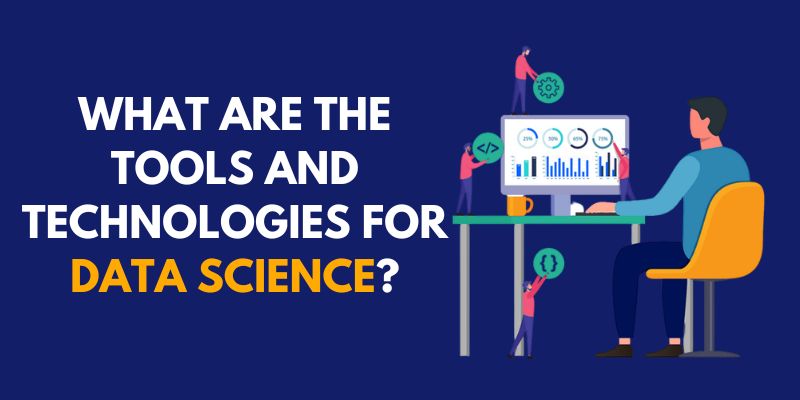Data science tools are used to look into raw and complex data (unstructured or structured data) and process, extract, and analyze it in order to extract valuable insights using various data processing techniques such as statistics, computer science, predictive modeling and analysis, and deep learning. In this blog, you will learn about the What are the Tools and Technologies for Data Science.
To make a decision on which tools to choose and learn for your career growth, check out the below listed most demanded tools in data science. You can learn more about the Data Science Tools through our best Data Science course in Chennai and be an expert.
Data Science Tools and Technologies
As data science teams grow their portfolios of enabling technologies to assist them reach their analytics goals, they have a wide range of tools and platforms to choose from. Here’s a list of the top data science tools that may be able to help you with your analytics, presented alphabetically with specifics on their features and capabilities, as well as any potential restrictions.
SAS
There are various categories within data science, and “data visualization” is one of them. SAS is the name of a tool that should come first in the “statistical” area while working with visualization. It is used to generate and exhibit a symmetric chart of analytics and aids in data management. It outcasts statistical modeling using the SAS computer language.
Features
- Location Analytics
- Text Analytics
- Business Intelligence
- Augmented Analytics
Microsoft Power BI
The most powerful tool you should be aware of if you are working on data visualization. As a cloud-based analysis service, it provides insight into any provided data to aid in business decisions. Power BI is capable of providing a comprehensive analytical environment for monitoring reports from many perspectives. The key reason for its popularity among data scientists is “Ease of Use,” which makes it more approachable for users to use for data visualization.
This software includes some of the most appealing templates for your project, including the following methods:
- Box plotting
- Scatter Plotting
- Distribution plotting
- Real-time information
- Power Map
- Power View
BigML
Another specialized tool used in data science for predictive modeling is capable of using methods such as data clustering, classification, anomaly detection, time-series forecasting, and so on. Aside from that, it provides an interactive, cloud-based GUI environment that may be used for sales forecasting, risk analysis, and product innovation. Today, BigML has over 150,000 active users and a robust community base from all over the world. Even better, BigML allows customers to establish their own private dashboard, and when all details are pulled through its API, they give greater security by providing HTTPS for smooth data and communication flow. Some of the more noticeable features are listed below.
Are you passionate about data science? Check out the Data Science Online Training, which includes 24/7 support, and kickstart your career in the field of Data Science.
Cluster analysis: FOr discovery, anomaly detection, etc.
Backup ML models: for data visualization
ML algorithm: Enables processing within your project
Knime
Konstanz Information Miner, abbreviated as KIM, is an open-source data analysis tool written in Java and built on Eclipse. It also provides the concept of a modular data pipeline, which enables data mining. Perhaps this tool is intended for data analysis, and one should have a fundamental understanding of it.
Tableau
Since we’re discussing popular data science tools, we can’t leave out tableaus. Tableau is one of the most popular and possibly commonly utilized data visualization applications. This solution is well-designed to meet the needs of both data scientists and business intelligence professionals. Because of its simplicity, it aids in the creation of simple yet elegant data that is easy to understand by professionals of all levels (both technical and non-tech), and it also allows non-technologists to construct their own customised dashboards. These qualities make it more tempting for data scientists to use this technology in their projects.
TensorFlow
You’ve probably heard of “TensorFlow” because it’s a popular tool among professionals and data scientists. As an open-source platform, it enables users to design data flow graphs in which nodes represent a mathematical and statistical operation and the graph, on the other hand, represents multidimensional arrays (data) that flow among them. This approach enables ML to be viewed as a graph of related operations.
Snowflake
“Data Warehousing” is one of the most significant subsets of Data Science nowadays, and the greatest tool for this task is the snowflake, which is built on SQL for the cloud. The finest thing is that it gives you complete flexibility and efficiency, which is difficult to achieve without a big data platform.
Now that you have understood the concepts of What are the Tools and Technologies for Data Science. Going for Programming Languages Institutes in Chennai will help you learn the most in-demand programming languages and technologies with hands-on projects.
Read more: Data Science Interview Questions and Answers



